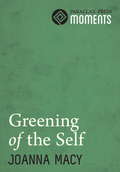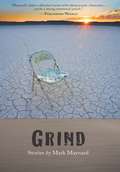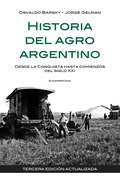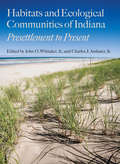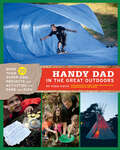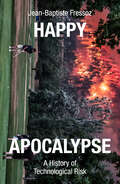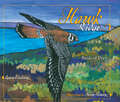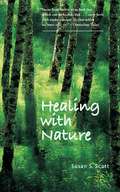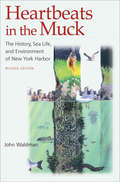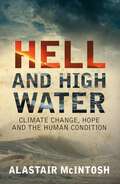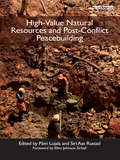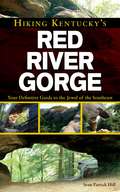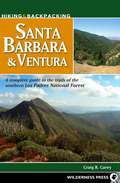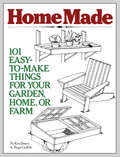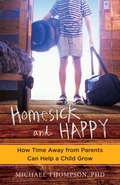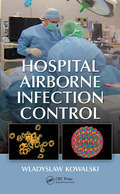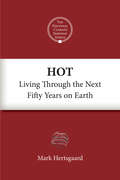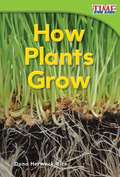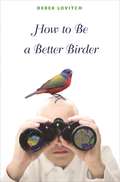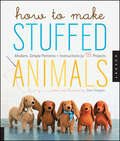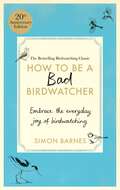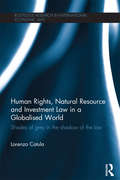- Table View
- List View
Greening of the Self
by Joanna MacyThe premise of Greening of the Self is that we are not individuals separate from the world. Instead we are always "co-arising" or co-creating the world, and we cannot escape the consequence of what we do to the environment. Joanna Macy's innovative writing beautifully demonstrates that by broadening our view of what constitutes "self" we can cut through our dualistic views and bring about the emergence of the "ecological self", that realizes that every object, feeling, emotion, and action is influenced by a huge, all-inclusive web of factors. Any change in the condition of any one thing in this web affects everything else by virtue of interconnectedness.Greening of the Self is visionary and future-oriented, making it essential reading for anyone who wants to discover the knowledge authority and courage to respond creatively to the crises of our time.Based on a chapter in Joanna Macy's bestselling World as Lover, World as Self.
Grind
by Mark MaynardConvicts round up wild mustangs, a schizophrenic homeless man wins the jackpot and disappears, a truck driver with a child's mind spends his last hours in the embrace of a prostitute's photos-disparate and vivid, Mark Maynard's characters intersect in the new wild west of Reno, Nevada."Throughout the volume's eight tenuously linked tales, lives and fortune are lost, and the city of Reno emerges as a locus of shattered souls. Maynard's debut collection bursts with idiosyncratic characters...packs a strong emotional punch...is strangely entertaining."-Publishers Weekly"In Grind, Maynard reveals a world the Nevada tourism board would rather you didn't see...A debut collection of stories that perfectly captures the seediness, desperation and sense of loss permeating the hot desert world of Reno."-Shelf Awareness"Mark Maynard's Reno is so sleazily appealing, so filled with convict cowboys, wild horses, racing pilots, truckers, snow bums, eco-terrorists, tattoo conventions, pawnshops and jackpots that you emerge from reading Grind dazed by this author's empathy for neglected quarters of humanity. You feel gritty all over-and more alive."-Carolyn Cooke, author of Daughters of the Revolution"The characters in these stories are as beautiful and broken as the desert itself. Mark Maynard explores the stony truths of lost lives with an unflinching eye for detail, an insider's sense of the place and its people, and an honest compassion. The heartbreaks here are real, as are the moments of uncommon grace and hard-won redemption."-Kim Barnes, author of In the Kingdom of Men"Mark Maynard's Grind is chock full of men and women who are desperate with want and full of spirit. Pawnbrokers. Truckers. Casino shills. Prison inmates. They're all here, and they're all gloriously alive. This is prime American fiction-tough, generous, and open-eyed."-Alyson Hagy, author of Boleto"Grind is exactly what I like in a locally based book. Plenty of those characters who make a visit to the environs of Reno both an exciting potential and an illicit affair...This is a Northern Nevada book."-D. Brian Burghart, Reno News & Review
HISTORIA DEL AGRO ARGENTINO (EBOOK)
by O. Gelman BarskyA pesar de la importancia que tiene el agro en la sociedad argentina, han sido escasos los intentos de indagar en su evolución a lo largo de la historia. Este libro construye una síntesis del desarrollo rural de todo el país: comienza con el análisis de las comunidades indígenas y continúa con la construcción del mundo agrícola colonial, la conformación de las nuevas economías agrarias a partir de la independencia, la expansión ganadera en la primera mitad del siglo XIX y el crecimiento de distintas economías regionales. El estudio avanza sobre el notable desarrollo del agro pampeano y el auge de la producción azucarera del noroeste y vitivinícola de Cuyo, así como las de otras sociedades del interior. Asimismo, son analizados los efectos de la Primera Guerra Mundial y de la crisis internacional de los años 30 en las políticas y las dinámicas agrarias. La caída de la producción agrícola pampeana y los cambios sociales desatados en esta región en el contexto de la Segunda Guerra Mundial, y el posterior período de recuperación, junto a los avances de las producciones regionales se presentan detalladamente. Finalmente, el impacto de las medidas macroeconómicas en la reorganización del ámbito rural en las últimas décadas, incluido el conflicto por el excedente agrario que sacudió al país en 2008, cierra este libro en el que los autores ofrecen una visión completa y profunda de un sector decisivo en el pasado y presente de la Argentina.
Habitats and Ecological Communities of Indiana
by Jr. John O. Whitaker Jr. Charles J. Amlaner Jr. George R. Parker Peter E. Scott Marion T. JacksonIn Habitats and Ecological Communities of Indiana, leading experts assess the health and diversity of Indiana's eight wildlife habitats, providing detailed analysis, data-generated maps, color photographs, and complete lists of flora and fauna. This groundbreaking reference details the state's forests, grasslands, wetlands, aquatic systems, barren lands, and subterranean systems, and describes the nature and impact of two man-made habitats--agricultural and developed lands. The book considers extirpated and endangered species alongside invasives and exotics, and evaluates floral and faunal distribution at century intervals to chart ecological change.
Handy Dad in the Great Outdoors: More Than 30 Super-Cool Projects and Activities for Dads and Kids
by Todd DavisTrade in screen time for fresh air and family fun with adventures and experiments from the host of HGTV’s Room Crashers.Slacklining, edible bugs, tarp surfing, and more! In this awesome follow-up to the hugely popular Handy Dad, extreme sports athlete and TV host Todd Davis gathers more than thirty projects and activities sure to get kids outside and entertained for hours. With easy-to-follow instructions, helpful photographs, and detailed line illustrations, Handy Dad in the Great Outdoors is packed with all the essentials. From simple campsite know-how to more ambitious building projects (tepee anyone?), plus a few pranks for good measure, this book has something for every family and every place—be it the backcountry or the backyard.
Happy Apocalypse: A History of Technological Risk
by Jean-Baptiste FressozHow risk, disasters and pollution were managed and made acceptable during the Industrial RevolutionBeing environmentally conscious is not nearly as modern as we imagine. As a mode of thinking it goes back hundreds of years. Yet we typically imagine ourselves among the first to grasp the impact humanity has on the environment. Hence there is a fashion for green confessions and mea culpas.But the notion of a contemporary ecological awakening leads to political impasse. It erases a long history of environmental destruction. Furthermore, by focusing on our present virtues, it overlooks the struggles from which our perspective arose.In response, Happy Apocalypse plunges us into the heart of controversies that emerged in the eighteenth and nineteenth centuries around factories, machines, vaccines and railways. Jean-Baptiste Fressoz demonstrates how risk was conceived, managed, distributed and erased to facilitate industrialization. He explores how clinical expertise around 1800 allowed vaccination to be presented as completely benign, how the polluter-pays principle emerged in the nineteenth century to legitimize the chemical industry, how safety norms were invented to secure industrial capital and how criticisms and objections were silenced or overcome to establish technological modernity.Societies of the past did not inadvertently alter their environments on a massive scale. Nor did they disregard the consequences of their decisions. They seriously considered them, sometimes with dread. The history recounted in this book is not one of a sudden awakening but a process of modernising environmental disinhibition.
Hawk Ridge: Minnesota's Birds of Prey
by Laura EricksonWas Caesar like the eagle because of his aquiline (from aquila, for &“eagle&” in Latin) nose, or does the eagle seem imperial because of his Caesar-like beak? Does the sharp vision of a &“hawk-eyed&” observer have any basis in nature? And what the heck is &“kettling&” to a bird-watcher, or, for that matter, a bird? Raptors have captured the imagination from time immemorial and have an especially rich history in Minnesota. The ancient peoples whose pictographs adorn the rock faces of Lake Superior&’s North Shore may well have witnessed the first hawk movements along Lake Superior—the same annual migration that today draws as many as twenty thousand people to Duluth&’s Hawk Ridge. These birds, passing through in astounding numbers, are among the hawks and accipiters, buteos and harriers, eagles and ospreys pictured and profiled in detail in this book.Written by one of Minnesota&’s best-known bird authorities, with images by one of the state&’s favorite illustrators, Hawk Ridge is as fun as it is informative. It introduces the state&’s raptors, from the rare visitor to the most familiar hawk, noting each species&’ signature traits—osprey wings, for instance, are crooked to help them catch fish; vultures urinate on their legs to cool themselves—and their nesting, breeding, and migrating habits. Did you know that Sharp-shinned Hawks banded at Hawk Ridge have been found throughout Central America and even into South America, and also, in midwinter, in Wisconsin? Laura Erickson offers a broad perspective (a bird&’s-eye view!), making sense of the raptor&’s role in the larger ornithological scheme.With descriptions of various species—and helpful distinctions between species, families, and orders—the book gives readers a clear idea of which raptors might be seen in Minnesota, when, where, and how often. It also includes a hawk migration primer that explains the movements that bring these birds in such awe-inspiring numbers to places like Hawk Ridge. Filled with curious facts and practical information for expert and amateur bird-watcher alike, the book is at once a guide to the hawks of Minnesota and a beautifully illustrated album of the most regal members of the avian kingdom.
Hawks In Flight
by Pete Dunne Clay Sutton David SibleyAmong the world's most popular birds, hawks can be some of the most difficult birds to identify. They're most often seen flying high above and at a distance. In the first edition of Hawks in Flight, Pete Dunne, David Sibley, and Clay Sutton presented a holistic method of hawk identification, using general body shape, the way they move, and the places they are most likely to be seen. The new edition of the book that Roger Tory Peterson called a "landmark" integrates an array of carefully selected photographs, David Sibley's superb illustrations, and a clear, information-packed text and takes raptor identification to a higher level. This edition covers all of the raptors that breed in North America, including those with limited ranges in Florida, the Southwest, and Texas. Picking up where its predecessor ended by including two decades of raptor identification refinement, Hawks in Flight summarizes and places in users&’ hands an identification skill set that used to take years to master. The unique alchemy of Dunne, Sibley, and Sutton—including their collective experience of more than one hundred years watching hawks—make this book a singular achievement and a must-have for anyone interested in hawks.
Healing with Nature
by Susan S. ScottSusan S. Scott is an experienced psychotherapist who, due to a back injury, was forced to abandon her therapist's couch and walk for therapy. Through her extended strolls through nature, she discovered the ingenious ability of trees to grow around obstacles and, in essence, heal themselves. The result of Dr. Scott's musings is Healing with Nature. This collection of stories and photos describes a different aspect of the healing process, matched with a corresponding tree image. Readers will learn how to observe their natural environment with fresh eyes, tap into their own self-healing powers, and discover creative ways to become the master of their own lives. An inspiring read for anyone with an interest in spiritual growth!
Heartbeats in the Muck: The History, Sea Life, and Environment of New York Harbor, Revised Edition
by John WaldmanHeartbeats in the Muck traces the incredible arc of New York Harbor’s environmental history. Once a pristine estuary bristling with oysters and striped bass and visited by sharks, porpoises, and seals, the harbor has been marked by centuries of rampant industrialization and degradation of its natural environment. Garbage dumping, oil spills, sewage sludge, pesticides, heavy metals, poisonous PCBs, landfills, and dredging greatly diminished life in the harbor, in some places to nil. Now, forty years after the Clean Water Act began to resurrect New York Harbor, John Waldman delivers a new edition of his New York Society Library Award–winning book. Heartbeats in the Muck is a lively, accessible narrative of the animals, water quality, and habitats of the harbor. It includes captivating personal accounts of the author’s explorations of its farthest and most noteworthy reaches, treating readers to an intimate environmental tour of a shad camp near the George Washington Bridge, the Arthur Kill (home of the resurgent heron colonies), the Hackensack Meadowlands, the darkness under a giant Manhattan pier, and the famously polluted Gowanus Canal. A new epilogue details some of the remarkable changes that have come upon New York Harbor in recent years. Waldman’s prognosis is a good one: Ultimately, environmental awareness and action has allowed the harbor to begin cleaning itself. Although it will never regain its native biological glory, the return of oysters, herons, and a host of other creatures is an indication of New York Harbor’s rebirth. This excellent, engaging introduction to the ecological issues surrounding New York Harbor will appeal to students and general readers alike. Heartbeats in the Muck is a must-read for anyone who likes probing the wilds, whether country or city, and natural history books such as Beautiful Swimmers and Mannahatta.
Hell and High Water: Climate Change, Hope and the Human Condition
by Alistair McIntoshThe ecologist and author of Soil & Soul makes a compelling and provocative argument for a new way of life in the face of climate change. Climate change is the greatest challenge that the world has ever faced. In this groundbreaking book, Alastair McIntosh summarizes the science of what is happening to the planet using his home country of Scotland as a case study. He then argues that the root of our climate crisis is not in our politics but in our consumerism—an addictive mentality where wants have replaced needs and consumption drives our very identity. In a fascinating journey through literature that speaks to climate change—including the ancient Sumerian Epic of Gilgamesh, Plato's myth of Atlantis, and Shakespeare's Macbeth—McIntosh reveals the psychohistory of modern consumerism. He shows how we have fallen prey to a numbing culture of violence and the manipulation of marketing. Only when we resist these vices and face reality will we discover the spiritual meaning of our troubled times. Only then can magic, new meaning, and all that gives life, start to mend a broken world. &“What [McIntosh] does brilliantly here is offer an alternative, deeply humanist version of green politics.&” —The Scotsman, UK
Hello Kitty, Hello Spring!
by SanrioHello Kitty, hello seasonal fun! This board book depicts our favorite star and her cast of friends enjoying all that spring has to offer: butterflies, baseball, and more!
High-Value Natural Resources and Post-Conflict Peacebuilding (Post-Conflict Peacebuilding and Natural Resource Management)
by Päivi Lujala Siri Aas RustadFor most post-conflict countries, the transition to peace is daunting. In countries with high-value natural resources – including oil, gas, diamonds, other minerals, and timber –the stakes are unusually high and peacebuilding is especially challenging. Resource-rich post-conflict countries face both unique problems and opportunities. They enter peacebuilding with an advantage that distinguishes them from other war-torn societies: access to natural resources that can yield substantial revenues for alleviating poverty, compensating victims, creating jobs, and rebuilding the country and the economy. Evidence shows, however, that this opportunity is often wasted. Resource-rich countries do not have a better record in sustaining peace. In fact, resource-related conflicts are more likely to relapse. Focusing on the relationship between high-value natural resources and peacebuilding in post-conflict settings, this book identifies opportunities and strategies for converting resource revenues to a peaceful future. Its thirty chapters draw on the experiences of forty-one researchers and practitioners – as well as the broader literature – and cover a range of key issues, including resource extraction, revenue sharing and allocation, and institution building. The book provides a concise theoretical and practical framework that policy makers, researchers, practitioners, and students can use to understand and address the complex interplay between the management of high-value resources and peace. High-Value Natural Resources and Post-Conflict Peacebuilding is part of a global initiative led by the Environmental Law Institute (ELI), the United Nations Environment Programme (UNEP), the University of Tokyo, and McGill University to identify and analyze lessons in natural resource management and post-conflict peacebuilding. The project has generated six edited books of case studies and analyses, with contributions from practitioners, policy makers, and researchers. Other books in the series address land; water; livelihoods; assessing and restoring natural resources; and governance.
Hiking Kentucky's Red River Gorge
by Sean Patrick HillHiking Kentucky's Red River Gorge is the definitive guide to trails in the Red River Gorge Geologic Area, Natural Bridge State Park, and Clifty Wilderness. The book showcases 25 of the best hikes in the Gorge, as well as a back-of-book bonus on nearby trails. Distinguished from other Red River Gorge guides, this book provides readers not only with detailed maps, sharp photos, and individual-trail details, THIS guidebook outlines definitive hikes-ways to explore the area and enjoy its flora, fauna, and history.The easy-to-use layout treats each hike distinctly, as its own adventure. Because of this, the routes are detailed with photographs, maps, trail gradient information and, most importantly, ratings for key elements that make a trail appealing to a wide variety of people. This allows the reader to make informed decisions about which trails they will want to hike, which ones will be appropriate for children, and so on. Further, readers will discover how to combine trails and routes for a great hiking day or backpacking trip. This book is ideal for people who've never been to the Gorge, or even beginner hikers.The book simply looks great and is easy to read, and designed for planning hikes as well as while on the trail.
Hiking and Backpacking Santa Barbara and Ventura
by Craig R. CareyNamed for the Spanish padres who established a network of missions along California's southern and central coasts, the Los Padres National Forest is the second-largest National Forest in the state, encompassing approximately 1,950,000 acres - nearly half of which is federally-designated wilderness.Hiking and Backpacking Santa Barbara and Ventura fills a huge gap in coverage of this great hiking and backpacking destination, leading the reader through the varied terrain of the forest's southern districts, from the fern-clad grottoes of the Santa Barbara frontcountry to the sweeping vistas and granite-clad ridges of the Chumash Wilderness.No other guide covers the region in such detail, and not since Dennis Gagnon's near-legendary guides in the 70s and 80s has the Santa Barbara (and Ventura) backcountry been given the guidebook treatment ... but this book goes even further. Every official trail (and many use trails) in the Santa Barbara, Ojai, and Mt. Piños districts are covered here, including those in the southern San Rafael Wilderness, Dick Smith Wilderness, Matilija Wilderness, Sespe Wilderness, Chumash Wilderness, the Santa Ynez Recreation Area, Rose Valley, the Santa Barbara and Montecito frontcountry, the Ojai frontcountry, and the Santa Paula/Fillmore frontcountry.
HomeMade: 101 Easy-to-Make Things for Your Garden, Home, or Farm
by Ken Braren Roger GriffithDiscover the satisfaction of building your own lawn chairs, fences, bootjacks, cold frames, and compost bins. <P><P>Ken Braren and Roger Griffith show you how to build a variety of easy-to-make items for your home and garden that are designed to save you money and make your life easier. <P><P>Even if you have limited construction experience, the simple instructions and clear illustrations in this guide will have you confidently crafting your own potting bench and building a basement closet.
Homesick and Happy
by Michael ThompsonAn insightful and powerful look at the magic of summer camp--and why it is so important for children to be away from home . . . if only for a little while. In an age when it's the rare child who walks to school on his own, the thought of sending your "little ones" off to sleep-away camp can be overwhelming--for you and for them. But parents' first instinct--to shelter their offspring above all else--is actually depriving kids of the major developmental milestones that occur through letting them go--and watching them come back transformed. In Homesick and Happy, renowned child psychologist Michael Thompson, PhD, shares a strong argument for, and a vital guide to, this brief loosening of ties. A great champion of summer camp, he explains how camp ushers your children into a thrilling world offering an environment that most of us at home cannot: an electronics-free zone, a multigenerational community, meaningful daily rituals like group meals and cabin clean-up, and a place where time simply slows down. In the buggy woods, icy swims, campfire sing-alongs, and daring adventures, children have emotionally significant and character-building experiences; they often grow in ways that surprise even themselves; they make lifelong memories and cherished friends. Thompson shows how children who are away from their parents can be both homesick and happy, scared and successful, anxious and exuberant. When kids go to camp--for a week, a month, or the whole summer--they can experience some of the greatest maturation of their lives, and return more independent, strong, and healthy.
Hospital Airborne Infection Control
by Wladyslaw KowalskiAlthough nosocomial, or hospital-acquired, infections have been well cataloged and are fairly well understood, traditional solutions have failed to completely eliminate the problem. Even the most modern hospitals find themselves stymied by the persistence of these pathogens in hospital wards and operating rooms. The degree to which most of these in
Hot: Living Through the Next Fifty Years on Earth
by Mark Hertsgaard Eban GoodsteinOn December 7, 2011, Mark Hertsgaard participated in The National Climate Seminar, a series of webinars sponsored by Bard College's Center for Environmental Policy. The online seminars provide a forum for leading scientists, writers, and other experts to talk about critical issues regarding climate change. The series also opens a public conversation, inviting participants to ask questions and contribute their own thoughts. Hertsgaard has spent the last two decades reporting on climate change for media outlets including The New Yorker, NPR, Time, Vanity Fair, and The Nation, where he is the environment correspondent. His lecture focused on political movements and how environmental advocates can provoke change in public attitudes and on Capitol Hill. Hertsgaard sees 2011's Occupy movement as a sign of real hope and discussed what climate activists can learn from Occupy's tactics. This E-ssential is an edited version of Hertsgaard's talk and the subsequent question and answer session. While some material has been cut and some language modified for clarity, the intention was to retain the substance of the original discussion.
How Do You Know It's Winter? (Into Reading, Read Aloud Module 5 #2)
by Ruth OwenNIMAC-sourced textbook
How Plants Grow (Time For Kids®: Informational Text)
by Dona Herweck RiceBeginning readers explore the steps to make plants grow! Readers will learn about various parts of the plant including seeds, roots, and leaves in this engaging nonfiction title. Featuring vivid, clear photos and simple, informational text, even the most reluctant reader will be captivated!
How to Be a Better Birder
by Derek LovitchThe essential tools you need to become a better birderThis unique illustrated handbook provides all the essential tools you need to become a better birder. Here Derek Lovitch offers a more effective way to go about identification—he calls it the "Whole Bird and More" approach—that will enable you to identify more birds, more quickly, more of the time. He demonstrates how to use geography and an understanding of habitats, ecology, and even the weather to enrich your birding experience and help you find something out of the ordinary. Lovitch shows how to track nocturnal migrants using radar, collect data for bird conservation, discover exciting rarities, develop patch lists—and much more.This is the ideal resource for intermediate and advanced birders. Whether you want to build a bigger list or simply learn more about birds, How to Be a Better Birder will take your birding skills to the next level.Explains the "Whole Bird and More" approach to bird identificationDemonstrates how to use geography, habitats, ecology, and the weather to be a better birderShows how to bird at night using radar, collect conservation data, develop patch lists—and moreOffers essential tools for intermediate and advanced birders
How to Make Stuffed Animals: Modern, Simple Patterns + Instructions for 18 Projects
by Sian KeeganLearn how to make eighteen stuffed animal projects with original sewing patterns and illustrated instructions from this easy-to-use craft guide.With a complete overview of techniques and materials, How to Make Stuffed Animals shows that making these cuddly creatures is fun, addictive, and much easier than one would think. Anyone who has completed the most basic of sewing projects can master the projects in this book, and these cute creations can be used as decorative objects for the home or as great handmade gifts.Inside, you’ll find adorable animals like:A squirrel holding an acornA grizzly bearA raccoonA horseA bird mobileCute caninesFurry felinesAnd many moreExplore a comprehensive range of animals in a modern and simple style with How to Make Stuffed Animals!
How to be a Bad Birdwatcher: To The Greater Glory Of Life
by Simon BarnesLook out of the window. See a bird. Enjoy it. Congratulations. You are now a bad birdwatcher. Anyone who has ever gazed up at the sky or stared out of the window knows something about birds. In this funny, inspiring, eye-opening book, Simon Barnes paints a riveting picture of how bird-watching has framed his life and can help us all to a better understanding of our place on this planet. How to be a bad birdwatcher shows why birdwatching is not the preserve of twitchers, but one of the simplest, cheapest and most rewarding pastimes around.
Human Rights, Natural Resource and Investment Law in a Globalised World: Shades of Grey in the Shadow of the Law (Routledge Research in International Economic Law)
by Lorenzo CotulaIn the world’s developing countries, foreign investment in natural resources brings into contact competing interests that are often characterised by unequal balances of negotiating power – from multinational corporations and host governments, through to the local people affected by the influx of foreign investment. The growing integration of the world economy has been accompanied by rapid and extensive developments in the national and international norms that regulate investment and its impact – including investment law, natural resource law and human rights law. These legal developments affect the ‘shadow’ that the law casts over the multiple negotiations that characterise international investment projects in the developing world. Drawing on international law, the national law of selected jurisdictions and the contracts concluded in a large investment project, Human Rights, Natural Resource and Investment Law in a Globalised World explores the ways in which the law protects the varied property rights that are at play in foreign investment projects in developing countries, with a focus on Africa. Through an integrated analysis of seemingly disparate fields of law, this book sheds new light on how the law mediates the competing interests that come into contact as a result of economic globalisation, whilst also providing new insights on the changing nature of state sovereignty and on the relationship between law and power in a globalised world. This book will be of interest to scholars, students and informed practitioners working in the fields of international investment and human rights law, comparative law, socio-legal studies, and development studies.
